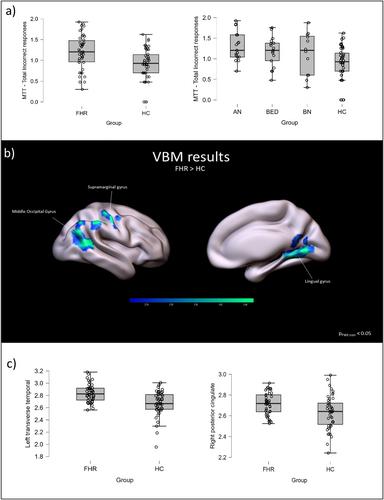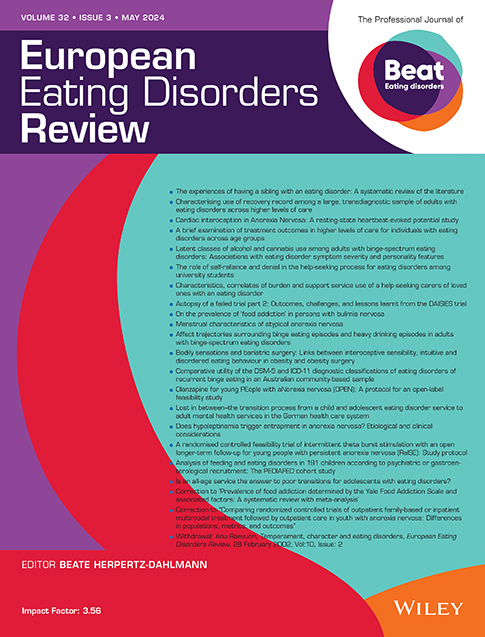Neurobiology and Cognition in Girls at High-Risk of Eating Disorders: Exploring Imaging-Derived Trait Markers
Abstract
Background
Eating disorders (EDs) are serious psychiatric disorders characterized by impairments in neurocognition and altered brain structure. To date the majority of studies have investigated these in acutely ill or recovered individuals. Studying children at familial high risk (FHR) for psychiatric disorders allows investigating vulnerability traits or trait markers that may be present before disorder onset. Our study is the first one to examine executive function and brain structure in girls at FHR for ED (Anorexia Nervosa, Bulimia Nervosa, and Binge Eating Disorder) compared to controls (girls not at familial high risk - HC).
Methods
Forty-six (46) FHR girls (median age: 10.5 years, range: 9) and 50 HC girls (median age: 12 years, range: 8) completed a battery of neuropsychological tests assessing cognitive flexibility, inhibitory control, and working memory. Structural magnetic resonance imaging assessed grey matter volume (GMV) and cortical thickness (CT).
Results
Girls at FHR for ED performed a higher number of errors in a cognitive flexibility task compared to HC (β = 0.15, p < 0.05). They also had increased GMV in posterior regions such as the right supramarginal gyrus, middle occipital gyrus, and lingual/fusiform gyrus compared to HC (p < 0.05 cluster-level FWE-corrected), as well as increased CT in the left transverse pole (p < 0.001) and right posterior cingulate cortex (p < 0.05).
Conclusions
Girls at FHR show characteristic neurocognitive performance similar to that seen in individuals with ED, as well as differences in brain structure compared to HC. Our findings, together with previous evidence, highlight impairment in cognitive flexibility as a possible trait marker of ED. Further longitudinal studies are needed to confirm differences in GMV and CT identified in this study.


 求助内容:
求助内容: 应助结果提醒方式:
应助结果提醒方式:


